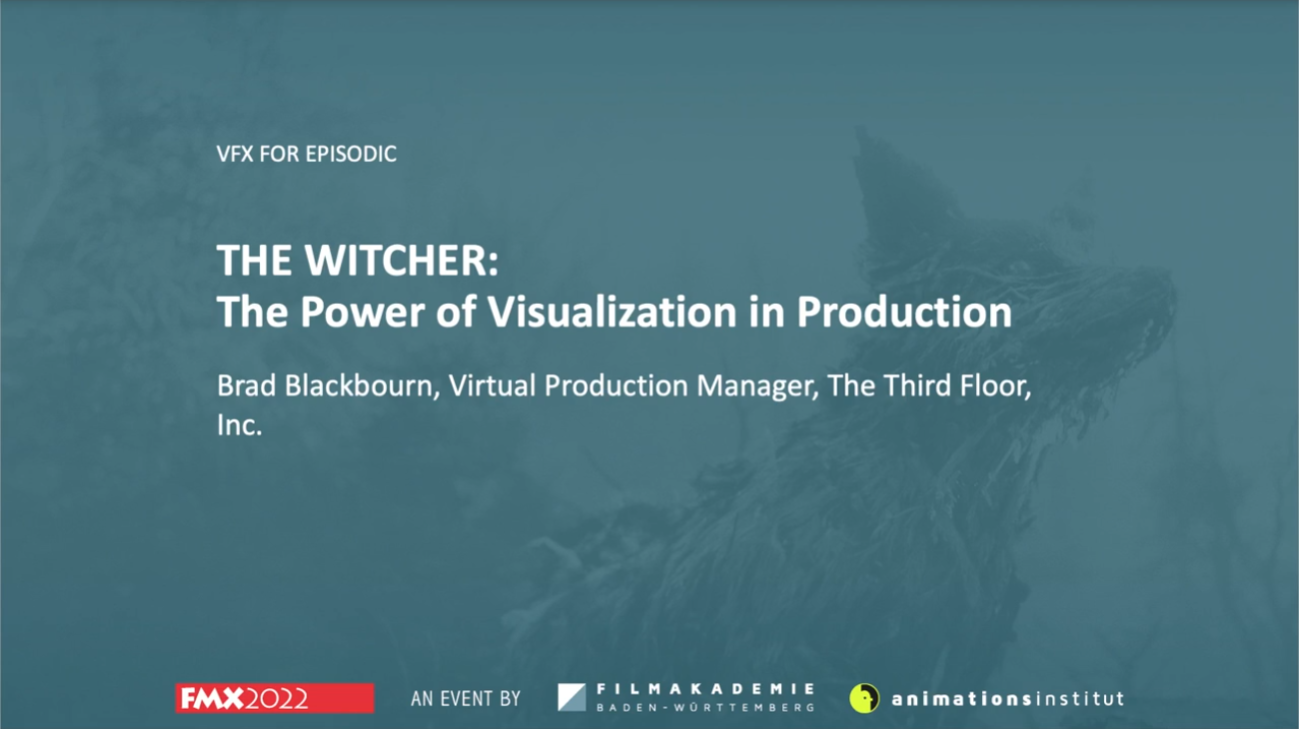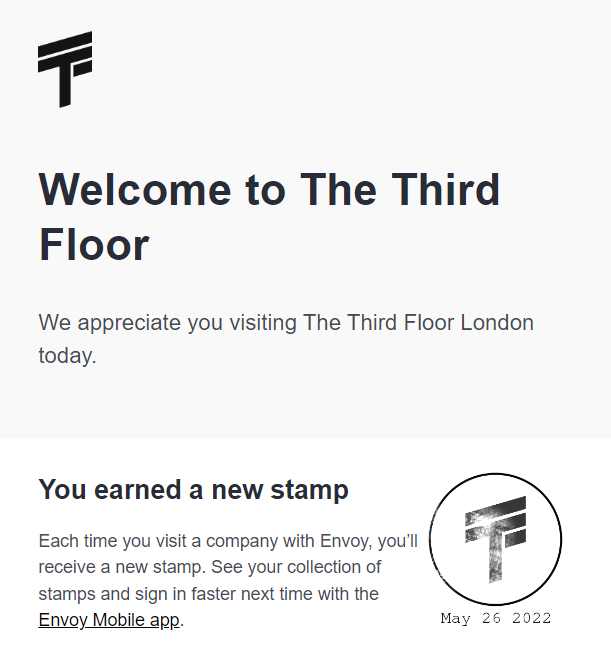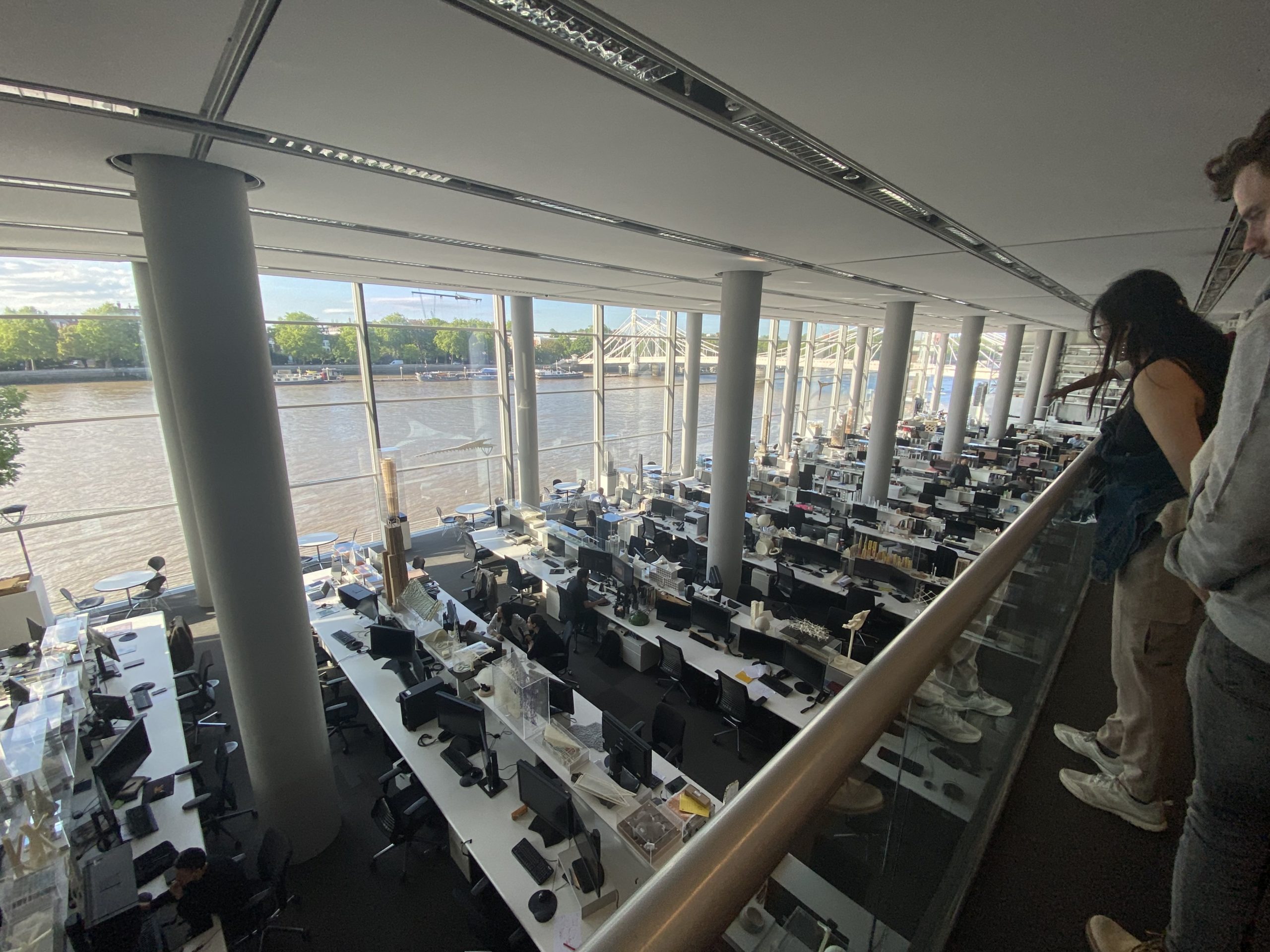Industry Engagement
My industry engagement consisted of emailing back and forth with Paul Arion, about what to learn in Unreal Engine. After giving us a talk at the end of second year, I was really inspired by the kinds of things he was discussing in his talk, one of the main things which was to learn Unreal Engine. After this, I emailed asking more specifically what kinds of things in Unreal Engine are necessary to learn for the industry:
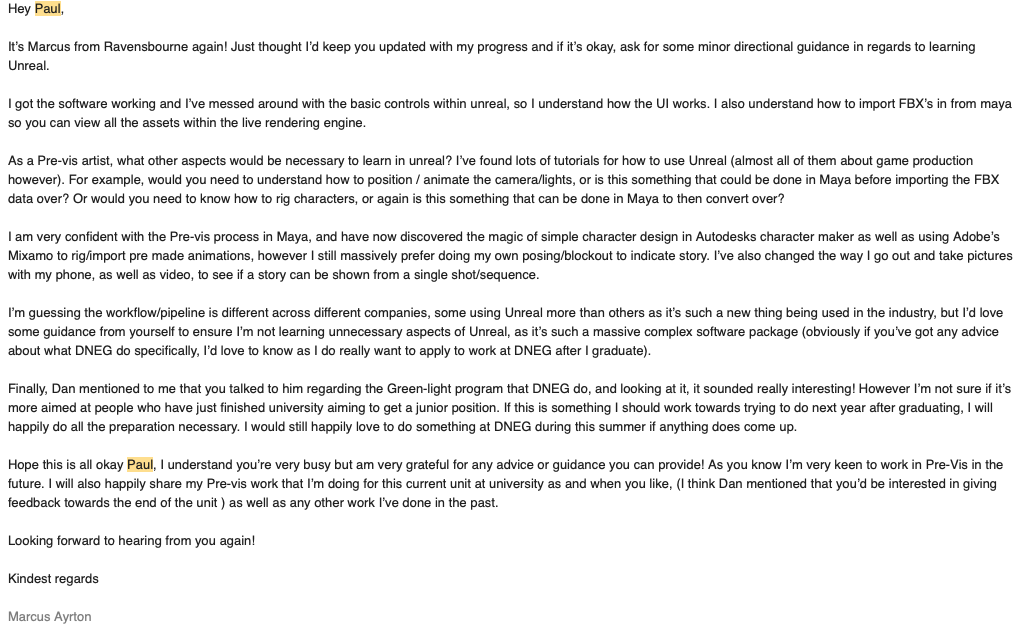
His response was extremely lengthy, and I was over joyed with the realistic expectations, but also the detail and assistance this would give me on my Unreal Engine Journey.
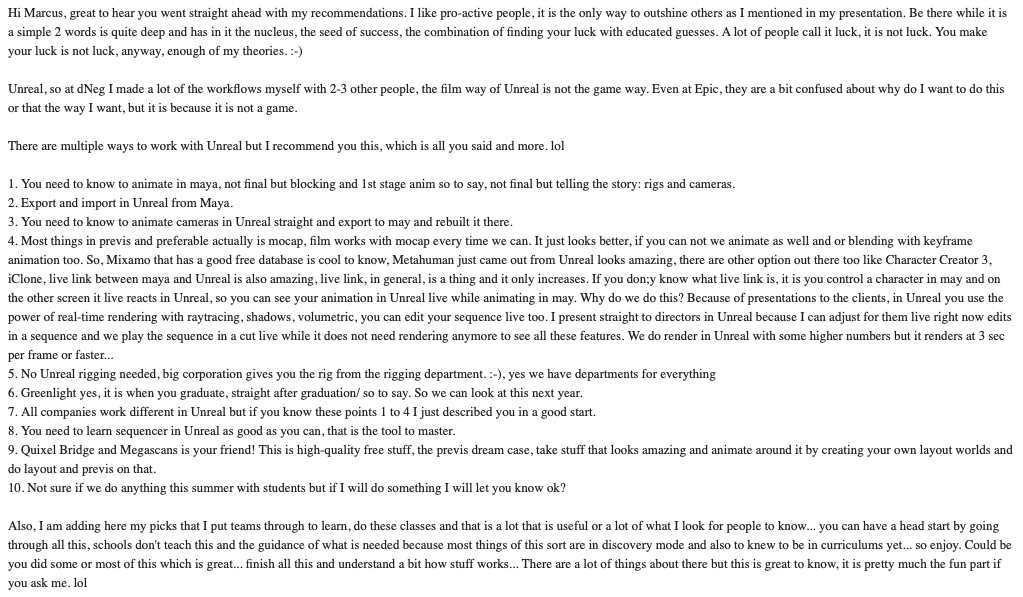
This email acted as almost a todo list for the portfolio unit, as well as some extra things I could potentially carry over to the FMP unit. I was overjoyed with our engagement, and thrilled that I have industry validation to be put on the right path.
After I finished the project, I publicly posted the project on Linkedin, and got Paul’s attention, to which he gave some terrific positive feedback.
Engagement part 2
UNREAL ENGINE – VIRTUAL PRODUCTION WEEK
In January of 2022, Unreal engine ran a virtual event, in which live-streamed videos / talks were uploaded to their site throughout the week, of industry examples, and discussions regarding the implications of virtual production. This content has been kept on the site ever since the content can still all be viewed offline.
With virtual production being something Paul Arion discussed in regards to Unreal Engine, it was amazing to get to see so many solid examples, as well as behind-the-scenes shots of how a virtual production workflow enhances the film or animation experience.
A pre-recorded video from the second day of the event showed a really in-depth visual look into how virtual production was used in Super Giant Robot Brothers. Notably, it showed a large space consisting of actors in motion capture suits acting in the scene, with virtual cameramen surrounding them. As the project is entirely animation as opposed to live-action, these virtual cameras had no lenses and were just sensors. In the talk, the crew discussed how stand-in props were used, which were then tracked to objects inside Unreal, which gives actors full control.
An unreal artist was on set at all times, so the director could ask for scenery or lighting changes, and the unreal artist could quickly do so, whilst the scene is still being rendered with the actors inside.
The editor also discusses how much easier it is to receive actual footage to edit and play with, rather than storyboards, so it’s very indictive, and more time can be spent playing around with timings and edits with many different shots. Having edited live-action footage before, it makes editing animation more comparable to editing live-action, where lots of shots have the room back and forth, compared to typical animation where only very specific frames are rendered out due to cost.
FMX 2022
During May, FMX was held in Germany, a big conference where lots of major companies give talks regarding animation and VFX. Although the event was held as an inperson conference, they also sold online tickets for a much cheaper cost, and with a student discount. This ticket actually provided video access to all of the talks in ‘video on demand’ form.
Brad Blackborn, the virtual production manager at The Third Floor, gave a talk on the uses of virtual production technologies in the Witcher 3, as well as a very good detailed overview with what The Third Floor do in regards to pre-vis.
Key points include describing Pre-vis as “answering questions”, and how rejection is always a success in pre-vis, as it proves that the practise works. The lengthy demonstration of Cyclops was brilliant, and showed how useful it is on real life film sets.
I took notes throughout the talk which I will attach.
Studio Visits
I attended a group visit of the architectural firm “Fosters and Partners”, where we were shown the studio, and shown some reels about the work they do. Although geared towards motion graphics, I was interested to learn they have a virtual production / mo cap department, for use when visualising people inside their projects. They also talked about using Unreal engine to render out their projects, and how they are more recently moving over to Unreal 5.
They seeked knowledge in cinema 4D, but stated that they had hired people based on their skills purely in Maya, and it’s more about the creative eye for composition rather than software package.
During my interview phase at The Third Floor, I was also invited by Maya Greaves for a solo studio tour then. I earned a badge based on my visiting, but I had to sign an NDA, so I cannot disclose what I saw. The enivornment overall was very community based, and I actually got to meet Brad Blackbourn from the FMX presentation which I watched online.



